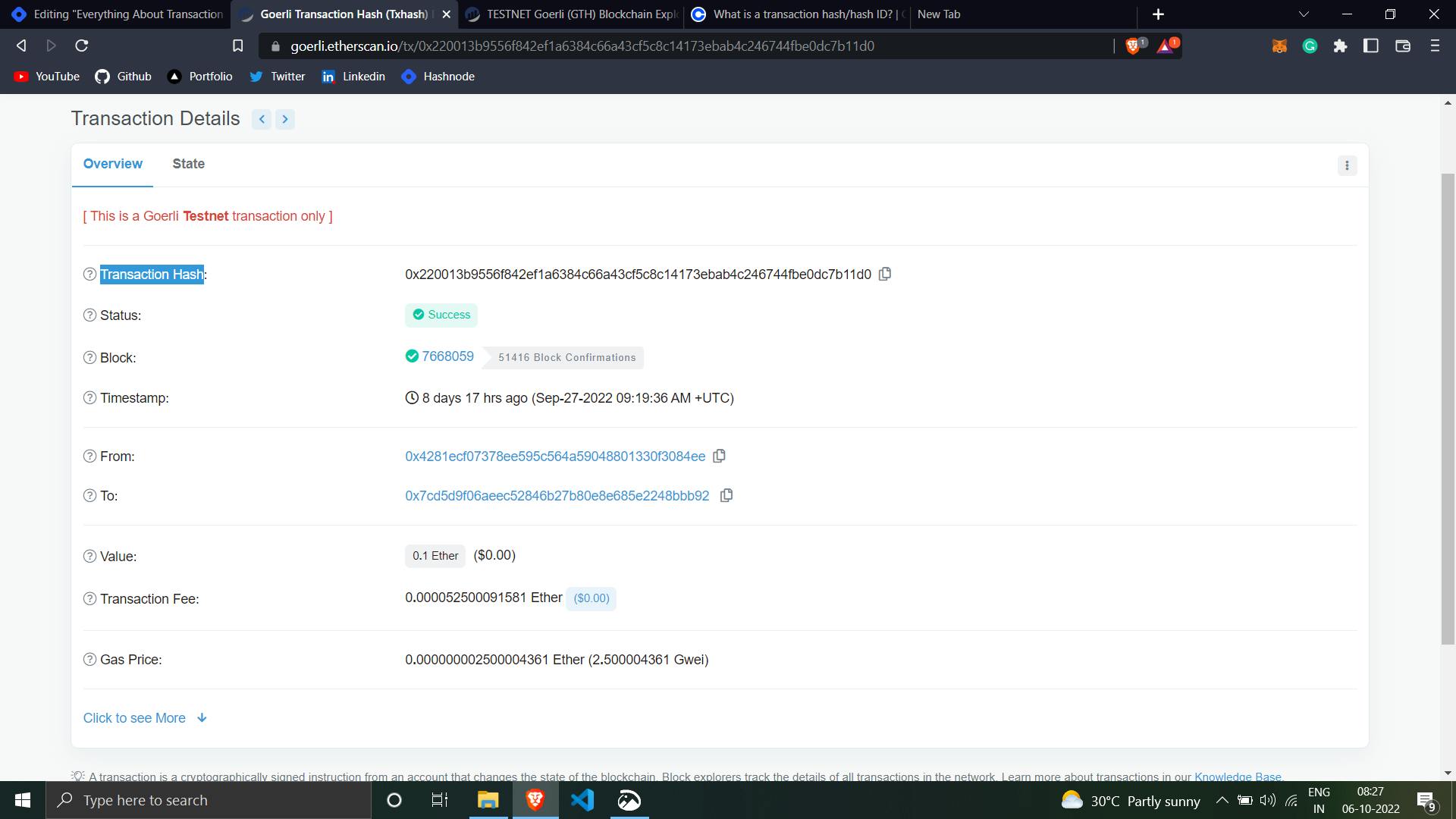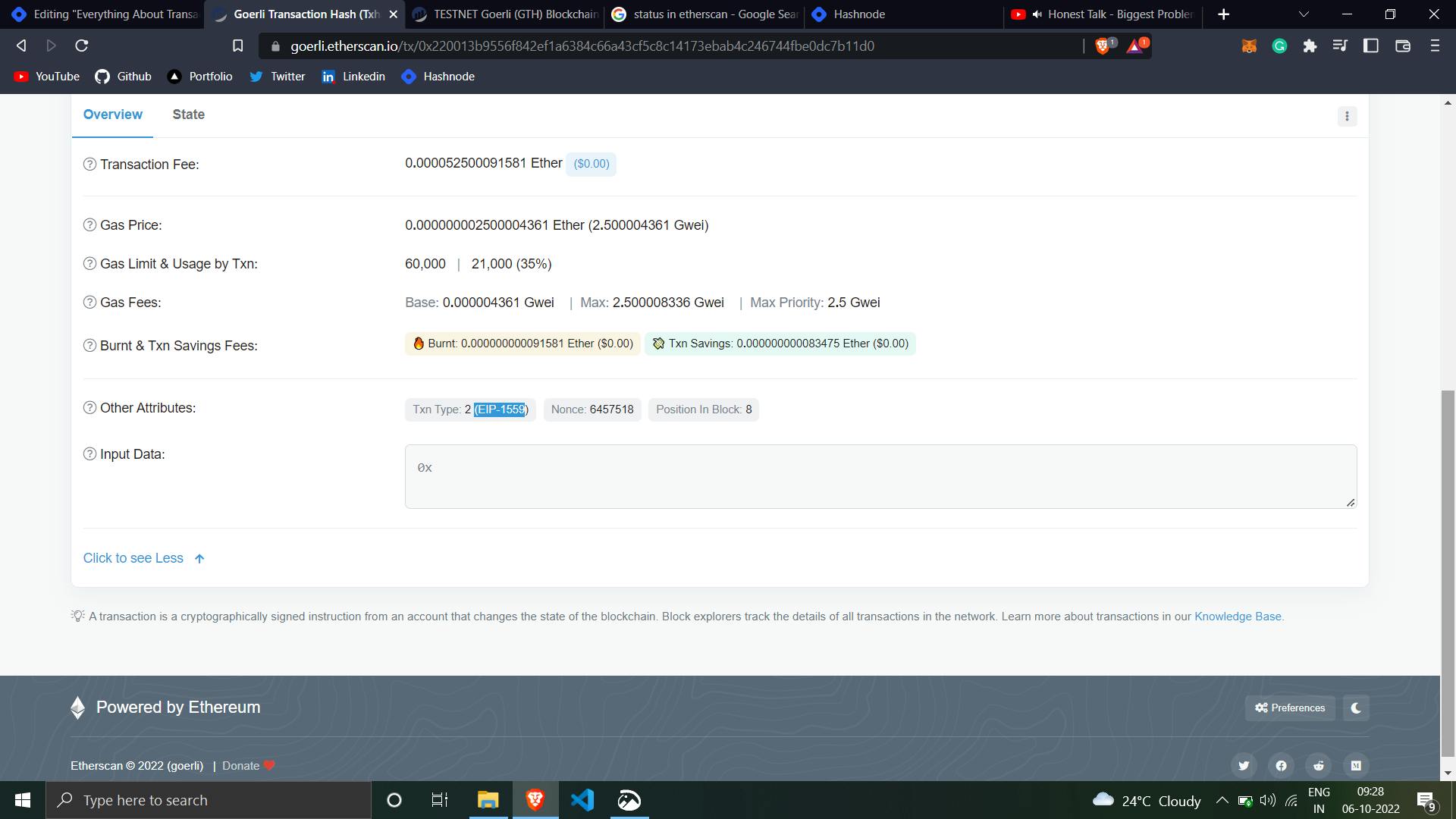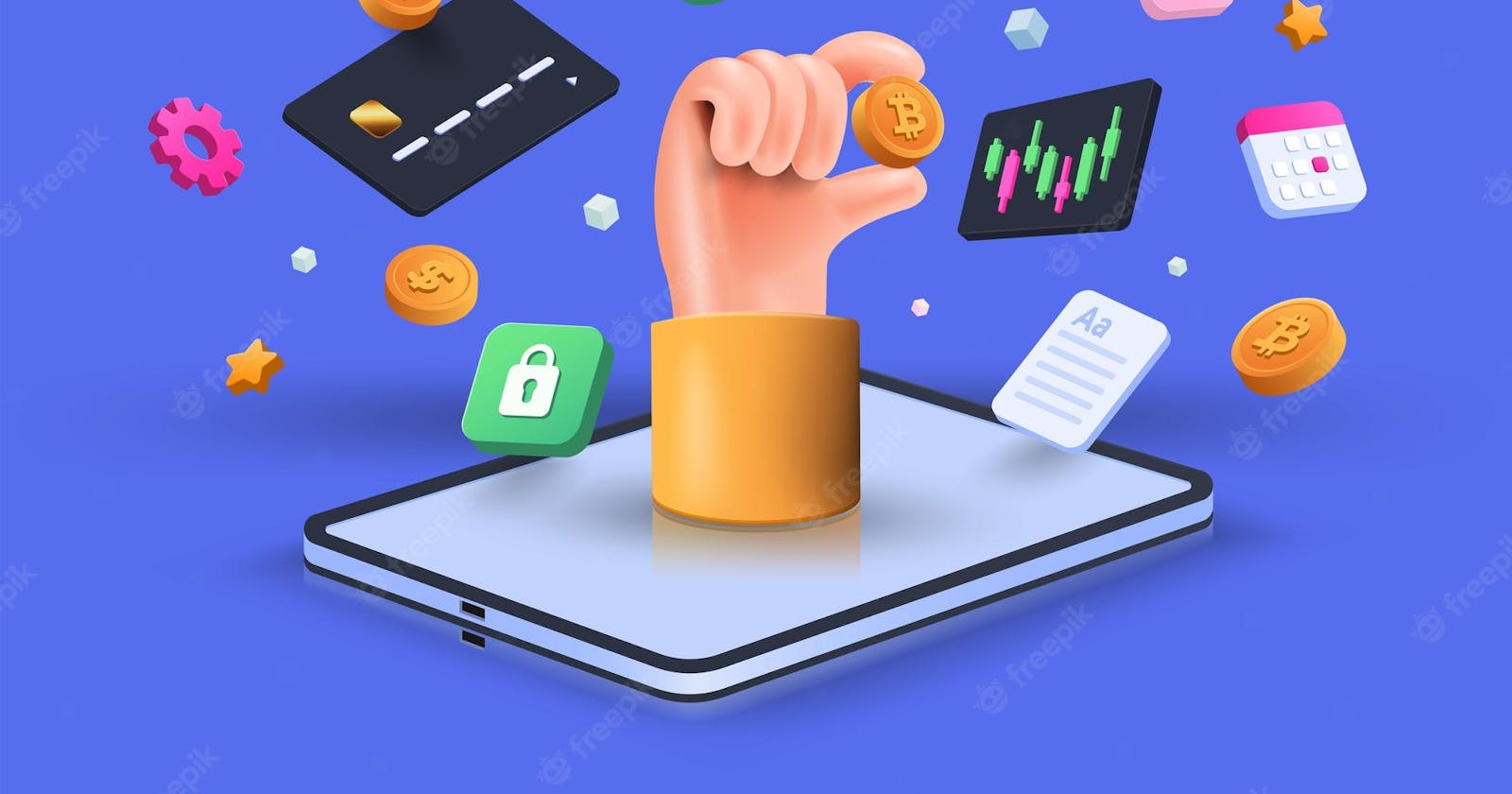So if you are learning blockchain development or you have just made the transaction in the Ethereum network using a wallet then I am sure you have visited the Etherscan page and there you have seen a bunch of details and if it's your first time then, of course, that would blow your mind.
So let's make it easy for you so the next time it will be very easy to understand.
What is Etherscan?
Etherscan is a block explorer that lets you view public data on transactions, smart contracts, addresses, and more on the Ethereum blockchain. All interactions on Ethereum are public, and Etherscan allows you to look through them like a search engine. You can use a transaction hash (transaction ID) to check all related activity, including tokens, smart contracts, and wallet addresses

Now all the important thing lies in the transaction detail box which contains two tab overview and state.
Overview - It contains all important data related to the transaction
State - A set of information that represents the current state is updated when a transaction takes place on the network
Also, it shows on which network you are performing transactions, here I am performing on Goerli Testnet

Transaction Hash
A transaction hash/id is a unique string of characters that is given to every transaction that is verified and added to the blockchain. In many cases, a transaction hash is needed in order to locate funds. It commonly appears at the top of the page when viewing your transaction through a block explorer website i.e Etherscan.
eg:- 0x220013b9556f842ef1a6384c66a43cf5c8c14173ebab4c246744fbe0dc7b11d0
Status
This shows the current state of your transaction it may have any one state out of three possible states.
Pending - Transaction is still in process, miners are mining the block or just they are verifying your transaction.
Success - Your transaction is successful and your block is added to the chain.
Cancelled - Your transaction has been cancelled.
Block
It is a block number which is confirmed in a chain. Also, in the grey bracket, it is the total number of blocks that mined since our block is confirmed. We can also programmatically manage after how many blocks we have to confirm transactions.
Timestamp
It is a time when your transaction is approved.
From & To
- From - Sender Address
- To - Receiver Address
Value
It is the number of ethers that are transferred between two accounts
Transaction Fee
This is the amount paid to the miner for processing transaction, now it is variable and not simple as you think this follow (EIP-1559) which we will discuss in the next blog.
Transaction fee = (Block base fee per gas + Max Priority fee per gas) * gas used

Now click on the see more button, and you will find the advance section of the transaction fee.
Gas Price
It is a cost of 1 unit of gas, it is mainly in ether and gwei, higher the gas price higher the chance including block.
Gas Limit & Usage by Txn
It is the maximum amount of units of gas that are willing to pay in this transaction.
Gas Fee
There are three types of gas fee
- Base Fee - It is a minimum gas price to send your transaction.
- Max Fee - Maximum gas fee we are willing to pay miners.
- Max Priority Fee - It is the max fee + max tip that will give to the miner.
Burnt & Txn Savings Fees
Base fees end up burning all
Burnt = base fee * amount of gas.
The most important thing is that sending transaction gets more expensive the more people use the chain.
Base fee is programmatically adjusted it will carry accordingly (50% full or less than 50%)
Other Attributes
It contains the following data
- Txn Type: 2 (EIP-1559) - Ethereum Improvement Proposal
- Nonce - In cryptocurrency, a nonce is an abbreviation for "number only used once," which is a number added to a hashed—or encrypted—block in a blockchain that, when rehashed, meets the difficulty level restrictions. The nonce is the number that blockchain miners are solving to receive the block reward
Input Data
Additional data that is included in the transaction is mainly contract interaction data or message sent by the sender.
Hope you enjoyed reading my blog try to read my other blogs too

